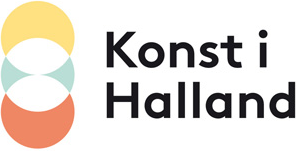
Sweden is a very long country. From the northernmost to the southernmost tip, it is 1,600 kilometres. And between Halland and Västerbotten, it is almost 1,000 kilometres as the crow flies.
In the art-based pedagogical project Snowflakes and Seaweed, students in Saxnäs were brought together with students from Halmstad and Laholm. Using art, handicrafts, stories, and the surroundings as a starting point, they explored how our identity is influenced by nature and culture.
What similarities and differences are there? The snowflake as a symbol of northern Sweden may seem very different from the seaweed in the south. But if you look closely, the shape is actually quite similar, and they both consist mainly of the same material – water.
The project was a collaboration between the ‘Art in Halland’ resource centre and Ricklundgården’s art-based pedagogical workshop EMMAS in Saxnäs. The starting point was an artistic residency exchange between Halland and Västerbotten.
The project was divided into a multistage rocket:
Bring together. As they exchange collected natural materials from their respective local areas, recorded greetings with location-bound stories and legends, and various cultural experiences, the students learn from each other about geography, nature, language, and culture.
Inspire. By working together with an artist, we aim to inspire people to embrace their individual creativity and expression.
Create. Crafts have a universal tradition as carriers of culture. The expressions can be quite similar even if the geographical distance is pretty far. Crafts and art are languages in themselves, capable of uniting and fostering conversations.
In February 2024, ‘Snowflakes and Seaweed’ was nominated for the Educational Project of the Year.
